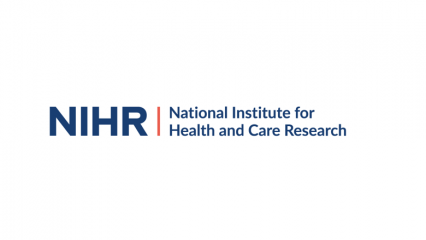Manchester patients are first in the UK to trial new glaucoma treatment
Three patients at Manchester Royal Eye Hospital (MREH) are the first in the UK to test a new fully adjustable surgical implant to drain excess eye fluid caused by glaucoma.
The new eyeWatch device is the first ever glaucoma device that allows post-operative flow adjustment in clinic. This innovative mechanism reduces the risk of under and over-drainage that can occur with current drainage devices, hence reducing potential side effects or the need for further surgery.
Manufactured by Rheon Medical, the eyeWatch device consists of an implant which is inserted through the skin at the front of the eye and into the white and is completely covered to stay out of sight. It is connected to a drainage tube which filters excess fluid into the back of the eye where it is reabsorbed. The innovative element is the built-in magnetically controlled flow mechanism that allows the surgeon to open or close the device, based on the eye pressure, using a special magnetic pen.
Glaucoma affects about 70 million people worldwide, and it is mostly associated with a build-up of fluid leading to high pressure in the eye. Left untreated, the disease typically causes damage to the optic nerve, leading to loss of vision. Usually glaucoma is treated with daily eye drops, but this controls rather than cures the condition. The use of glaucoma drainage devices (GDDs) reduces intraocular fluid pressure by providing an artificial drainage pathway from the eye. Mr Leon Au, consultant ophthalmic surgeon at MREH, is leading the Manchester arm of the eyeWatch study, which also involves patients in London and Switzerland. He says;
Mr Leon Au, consultant ophthalmic surgeon at MREH, is leading the Manchester arm of the eyeWatch study, which also involves patients in London and Switzerland. He says;
“Using the eyeWatch magnetic pen, we can easily change the opening and closing of the drainage device without any additional invasive surgery, until the eye pressure stabilises. This is usually around three months after surgery, at which point the rate of fluid flowing through the drain can be fixed, as it would be with any other GDD.
We have been involved in the research of many novel fixed flow devices especially for the treatment of mild and moderate glaucoma. However, with the eyeWatch I’m excited to see for the first time a drainage device that is easy to adjust and aims to tackle advanced glaucoma.
The 18 month study will test the contribution that eyeWatch makes in the treatment of advanced glaucoma which has not responded to previous surgery. Patients will be checked regularly in the days after their surgery and then followed up after six and 12 months. Mr Au and his team are recruiting a total of 15 glaucoma patients to take part in the Manchester trial. Bernie 73, from Preston was the first person in the UK to be fitted with the EyeWatch technology. After being diagnosed with glaucoma in her late 50s, Bernie has since had to take daily eye drops to reduce the pressure in her eyes.
Bernie 73, from Preston was the first person in the UK to be fitted with the EyeWatch technology. After being diagnosed with glaucoma in her late 50s, Bernie has since had to take daily eye drops to reduce the pressure in her eyes.
“I decided to take part in this study as I felt this technology could benefit my life. My eyes did not react well to the eye drops I was prescribed to regulate the pressure and left me with swollen and itchy eyes.
It is fantastic to know that my eye pressure can be controlled without having to undergo further surgery. There is no longer a ‘wait and see’ approach to the management of my glaucoma and my consultant can easily help to reduce any fluctuations in pressure with the help of the new eyeWatch technology. Taking part in research has given me a new lease of life
Adan Villamarin is Chief Operating Officer at Rheon Medical and says:
“We are delighted to bring eyeWatch technology to patients in the UK and to be working with researchers at Manchester Royal Eye Hospital. Our aim in developing this technology is to offer a less invasive treatment pathway for people living with advanced glaucoma.
“Current surgical treatment aims to reduce pressure build-up but does not allow for subsequent control of pressure, meaning a patient may require further operations. The eyeWatch system allows for simple and accurate control of intraocular pressure, providing an alternative clinical treatment pathway which we hope in time can be developed for all types of glaucoma.”




